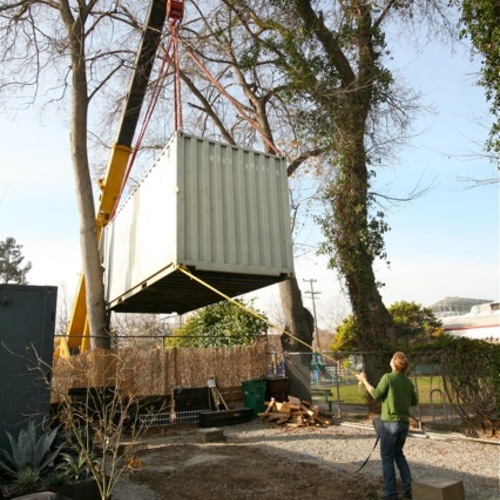
Image Credit: Seaside, Florida
In one corner we have New Urbanism, an approach to urban planning that favors residential density and mixed use over suburban sprawl and dependence on the automobile. In the other corner is Landscape Urbanism, which sees suburban development not only as market-proven and integral to our way of life, but also as an opportunity to ecologically harmonize each community with its environment — in spite of suburbia’s reliance on the automobile.
The New Urbanism has been around for about 30 years, and its theory has been applied to hundreds of projects, perhaps most famously to Seaside, a community on the Florida panhandle that began development in the early 1980s and now serves a substantial number of vacationers in addition to year-round residents. Landscape Urbanism has been gaining currency in many academic settings over the past decade, most notably at the Harvard University Graduate School of Design, although, as a recent Boston Globe article on the two strategies points out, the theory has yet to be applied widely.
Trading jabs
The relationship between New Urbanism and Landscape Urbanism factions is, apparently, robustly adversarial. The latter’s most prominent proponent, architect Charles Waldheim, who is chair of Harvard’s Graduate School of Design, presents Landscape Urbanism as a vastly preferable – and decidedly more realistic – alternative to New Urbanism.
“The overwhelming majority of discourse in urban planning and design has been biased, has been kind of prejudiced to the idea that Manhattan-ism is the most sustainable urban future,” Waldheim said recently. “On the one hand, we know that density addresses a number of issues, but on the other hand, as soon as you say, ‘Where does your milk come from?’ we have a whole different set of questions about sustainability.”
Flag-bearers for New Urbanism, whose leaders include Andres Duany, an architect of the Seaside development, portray Landscape Urbanists as “lawn apologists,” a group of theorists who tout the virtues of automobile-based communities while sweetening their rhetoric with environmental catchphrases. (For another perspective on recent comments by Andres Duany, see “New Urbanist Andres Duany Lashes Out at LEED.”)
Room for both approaches?
A few readers responding to the Globe story write off the conflict as little more than an academic food fight. The reality is, though, that New Urbanism has been repeatedly put into practice and Landscape Urbanism likely will find its way into more than one community master plan – and both approaches will attract customers. Another, increasingly pressing reality is that if they expect their theories to prove and/or remain viable, both factions will have to focus more and more on better management of natural resources.
Even Waldheim is acutely aware, for example, that reliance on the automobile – that lynchpin of suburbia that Landscape Urbanists refer to as automobility – is vulnerable to the onset of peak oil, after which the rate of oil extraction will soon begin an inexorable decline.
“I think for many urban designers and planners, and many advocates of denser, more traditional urban form, there’s been a correlation that seems (to be) post-peak-oil is post-automobility,” Waldheim, in an interview conducted in 2008, said, adding that he and some of his colleagues expect that a set of carbon-neutral “bridging technologies” (presumably including electric cars) will keep automobility in the picture.
And the green homebuilder’s role in all this? If these rivals practice what they preach, those who build energy efficient homes should find work in both types of development.
Weekly Newsletter
Get building science and energy efficiency advice, plus special offers, in your inbox.















3 Comments
values breed disfunction
As I see it, the fact that land is more valuable in the "urban density" zone has resulted in a disfunctional system where the wealthiest can live closest to the center and the lesser fortunate to live out in more affordable real estate hence "suburbia" Neither are the ONLY answer, we just can't all live in the same place.....Is Duany designing affordable housing, or housing for the rich?
Both New Urbanism and
Both New Urbanism and Landscape Urbanism are well thought out concepts, and each has its rightful place. Each has its advantages and disadvantages. Neither can be deemed better or more “green” than the other. Both are a step in the right direction and are an improvement over “business as usual”. Utilizing these two concepts (plus other innovative ideas) will steer development in the right direction. As the article states, “density addresses a number of issues”, “but on the other hand “Where does your milk come from?””. Green development is not a one-size-fits-all, but more of a several sizes meshed together works best.
"Even Waldheim is acutely
"Even Waldheim is acutely aware, for example, that reliance on the automobile – that lynchpin of suburbia that Landscape Urbanists refer to as automobility – is vulnerable to the onset of peak oil, after which the rate of oil extraction will soon begin an inexorable decline."
Am I to assume that Waldeim is thought of as having even the slightest clue?
The day we don't have enough fossil fuel for autos is going to be just a bit more problematic than just whether the suburbs make sense to continue building IMHO.
Log in or create an account to post a comment.
Sign up Log in